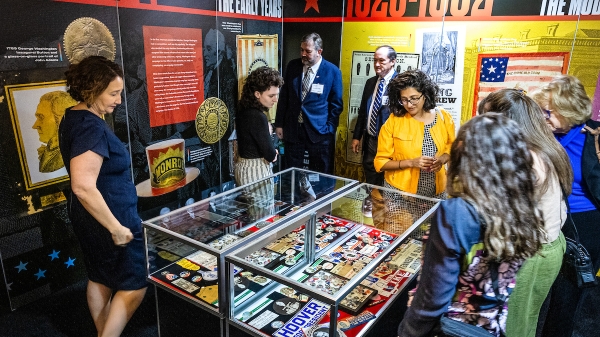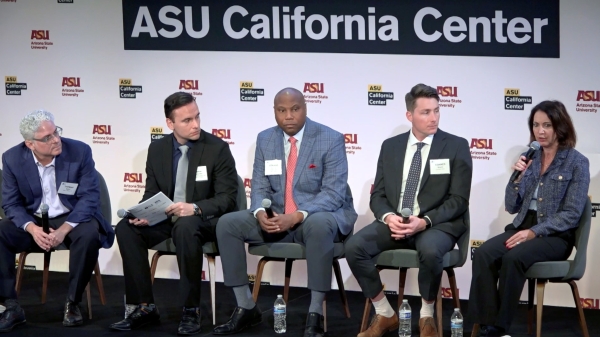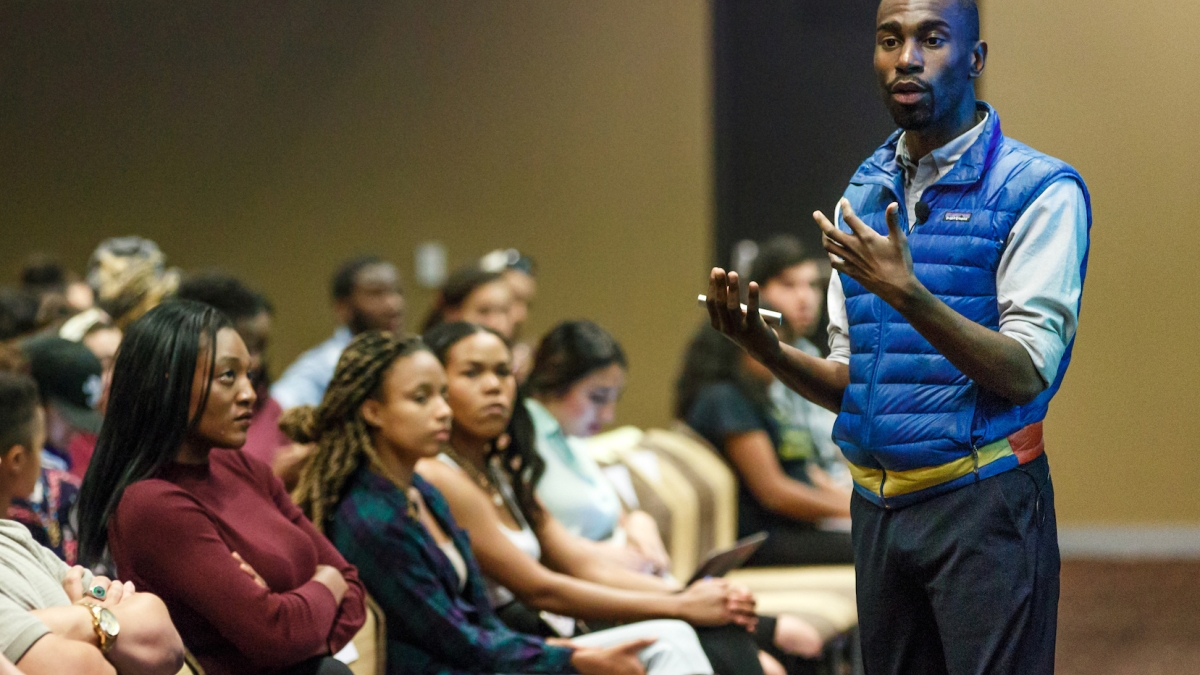A message posted outside the Memorial Union Ventana Ballroom on Monday night forbade the presence of posters and signs at a student-organized talk being given by DeRay Mckesson, one of the most outspoken members of the Black Lives Matter movement.
The international activist movement that began in 2013 with a Twitter hashtag in response to the acquittal of George Zimmerman in the shooting death of African-American teen Trayvon Martin has been at the center of a politically and socially charged conversation concerning violence and perceived systemic racism toward black people in the U.S. criminal justice system since.
But the event on ASU’s Tempe campus where Mckesson spoke to a group of roughly 350 students, faculty, staff and members of the community was peaceful and informative, covering topics from the power of social media, to the importance of engaging others in the cause, to productive next moves.
“As organizers, we give you the language and the tools” to enact positive change, Mckesson told the crowd, referring to himself and other influential activists associated with Black Lives Matter. “But you have to carry this stuff with you every day, at work, at home” and everywhere else.
The event was organized by students from various groups including Undergraduate Student Government, Rainbow Coalition and Black African Coalition.
Geography and urban planning undergrad and president of Rainbow Coalition Gabriel Leon said having someone speak to students about activism has “the power to deepen and broaden their perspective of the world.”
Mckesson began his talk with images from the 2014 protests in Ferguson, Missouri, that followed the shooting death of another young black man, Michael Brown, by white police officer Darren Wilson. If it weren’t for social media, Mckesson said, nobody would have known Brown’s body lay in the street for four hours before being removed by medical personnel.
Mckesson himself has more than 750,000 Twitter followers. He praised social media in general for its ability to allow everyday people to tell the story of what’s really going on around them — “telling the truth in public,” as he calls it.
In April 2015, Mckesson and fellow activists Johnetta Elzie, Samuel Sinyangwe and Brittany Packnett launched Mapping Police Violence, which collected data on people killed by police during 2014. In August 2015, the same group launched Campaign Zero, a 10-point policy plan for police reform.
He addressed the issue Monday night, saying, “There’s very little data on police.” He added that most of that data comes from an aggregate of newspaper reports, which is a problem because it can be inaccurate.
Although he preferred to avoid commenting too much about President Donald Trump (“because he’s stressing me out right now,” he said), Mckesson did speak about having met with former presidential hopefuls Hillary Clinton and Bernie Sanders, as well as former President Barack Obama, to advance the mission of Black Lives Matter.
He stressed the importance of activists having a presence and voicing their concerns both amongst each other and to people in power.
“We have to be on the inside as well as the outside,” Mckesson said. “Us being present at the table is our attempt to make truth present at the table.”
He proved that conviction in 2016 when he ran for mayor of his hometown, Baltimore. Though he lost, the experience — during which he sometimes spoke to neighborhood crowds in living room gatherings — served as “a deep reminder of the power of organizing at the local level.”
At the close of his talk, Mckesson told the audience that they have “the power to stand up right now and do something beautiful” through protest, and that the most compelling data they have to back up their cause is their own lives.
Top photo: Educator and civil rights activist DeRay Mckesson speaks to a group of students Monday in the Memorial Union on ASU's Tempe campus. Mckesson is a leading voice in the Black Lives Matter movement, and his speech focused on campaign strategies, the origins of Black Lives Matter and the role of activism in the current political climate. Photo by Anya Magnuson/ASU Now
More Law, journalism and politics

Exhibit uses rare memorabilia to illustrate evolution of US presidential campaigns
After one of the most contentious elections in history, a new museum exhibit offers a historical perspective on the centuries-old American process.“We The People! Electing the American President” had…

TechTainment conference explores the crossroads of law, technology, entertainment
What protections do writers, actors, producers and others have from AI? Will changing laws around name, image and likeness (NIL) eliminate less lucrative college sports programs?And what does…

How to watch an election
Every election night, adrenaline pumps through newsrooms across the country as journalists take the pulse of democracy. We gathered three veteran reporters — each of them faculty at the Walter…
